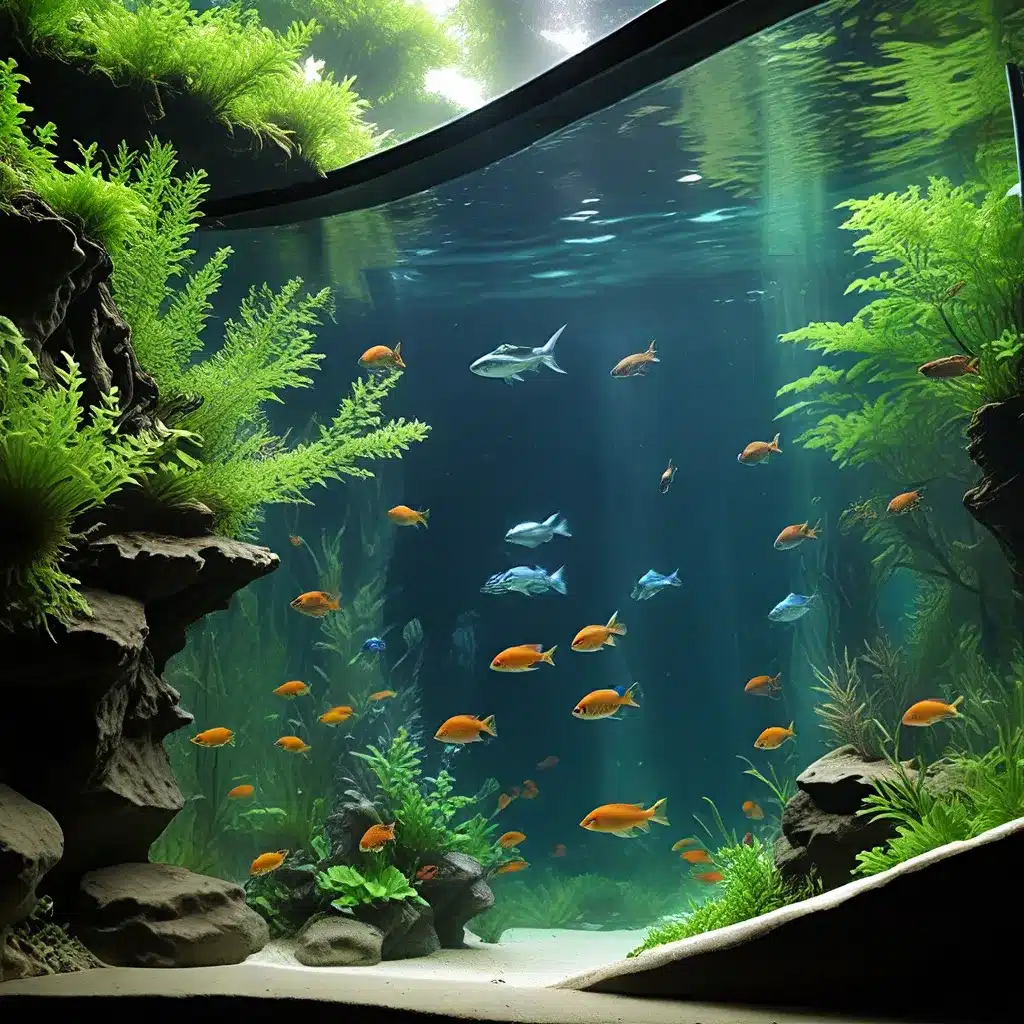
As passionate aquarium hobbyists, we have a responsibility to our underwater companions and the delicate ecosystems they inhabit. In this comprehensive guide, we’ll explore strategies for building and maintaining a sustainable aquarium that prioritizes the long-term wellbeing of aquatic species and the environment.
Embracing Ecosystem-Based Management
Traditionally, aquarium enthusiasts have focused on the individual needs of their fish, plants, and invertebrates. However, the modern approach to aquarium care emphasizes an ecosystem-based management (EBM) approach. This holistic perspective recognizes that each component of the aquatic environment is interconnected and interdependent.
By understanding the complex relationships within the microcosm of our aquariums, we can make more informed decisions that benefit the entire system. This might involve carefully selecting compatible species, optimizing water parameters, and implementing advanced filtration techniques to create a thriving, balanced environment.
Experts suggest that adopting an EBM mindset can have far-reaching positive impacts on the health and sustainability of our aquarium ecosystems. From promoting species diversity to enhancing water quality, this comprehensive approach is essential for aquarists who want to make a meaningful difference.
Sustainable Aquascaping Techniques
The visual appeal of an aquarium is often a key driver for hobbyists, but it’s crucial to balance aesthetics with ecological considerations. Sustainable aquascaping involves designing and maintaining aquarium layouts that mimic natural environments, support diverse populations, and minimize long-term maintenance requirements.
One of the hallmarks of sustainable aquascaping is the incorporation of live plants. Not only do they add visual interest and depth to the aquarium, but they also actively remove waste products, oxygenate the water, and provide essential hiding places for timid species. By carefully selecting hardy, low-maintenance plant varieties, aquarists can create vibrant, self-sustaining ecosystems.
Another key aspect of sustainable aquascaping is the strategic placement of hardscaping elements, such as rocks, driftwood, and decorative structures. These features not only contribute to the overall design but also serve as substrate for beneficial bacteria, offer shelter for fish, and influence water flow patterns. Thoughtful arrangement of these components can enhance the aquarium’s long-term stability and resilience.
Advanced Filtration Techniques
Effective water filtration is a critical component of any sustainable aquarium. While basic mechanical and chemical filtration systems are essential, advanced filtration techniques can take aquarium maintenance to the next level, ensuring optimal water quality and minimizing the need for frequent water changes.
One such approach is the use of live biological filtration, which harnesses the power of beneficial bacteria to break down harmful waste products. By establishing a thriving population of nitrifying and denitrifying bacteria, aquarists can reduce the accumulation of toxic nitrates and maintain a healthy, balanced environment.
Another innovative filtration method is the implementation of protein skimmers. These devices remove organic compounds from the water column before they can decompose and contribute to water quality issues. Protein skimmers are particularly beneficial in saltwater aquariums, where they can effectively manage the buildup of dissolved organic matter.
For aquarists seeking even greater efficiency, mechanical filtration systems with ultrafine media can capture microscopic particles and particulates, ensuring crystal-clear water and reducing the frequency of filter cleanings. By layering these advanced filtration strategies, aquarists can create a self-sustaining ecosystem that requires minimal intervention.
Responsible Species Selection
The fish, invertebrates, and plants we choose to incorporate into our aquariums can have a significant impact on the long-term sustainability of the system. Responsible species selection involves carefully researching the specific needs and behaviors of each organism, ensuring compatibility and minimizing the risk of aggressive or invasive species.
When building a new aquarium or adding to an existing setup, it’s essential to consider factors such as maximum size, dietary requirements, water parameter preferences, and social interactions. By selecting species that are well-suited to the available space and resources, aquarists can create a harmonious community that thrives without disrupting the delicate balance of the ecosystem.
Furthermore, aquarists should be mindful of the environmental impact of their hobby and avoid purchasing fish or plants obtained through unsustainable or unethical practices. Seeking out reputable suppliers, supporting conservation efforts, and considering responsibly bred or captive-raised specimens can all contribute to the sustainability of the aquarium industry.
Embracing a Holistic Approach
Achieving sustainable aquarium practices requires a comprehensive, holistic approach that encompasses every aspect of aquarium management. By adopting an ecosystem-based mindset, implementing sustainable aquascaping techniques, utilizing advanced filtration methods, and making responsible species selections, aquarists can create thriving aquatic environments that not only captivate the senses but also safeguard the future of the aquatic life entrusted to our care.
As passionate hobbyists, we have the power to make a lasting difference. By embracing sustainable aquarium practices, we can contribute to the preservation of our underwater world and inspire others to follow suit. The future of our aquatic companions and the delicate ecosystems they inhabit depend on our commitment to responsible and environmentally-conscious aquarium management.
Remember, the health and well-being of our aquarium inhabitants are in our hands. By prioritizing sustainability, we can ensure that our aquatic oases continue to thrive for generations to come. Explore the resources available on King Aquarium to deepen your understanding of sustainable aquarium practices and unlock the full potential of your underwater haven.

